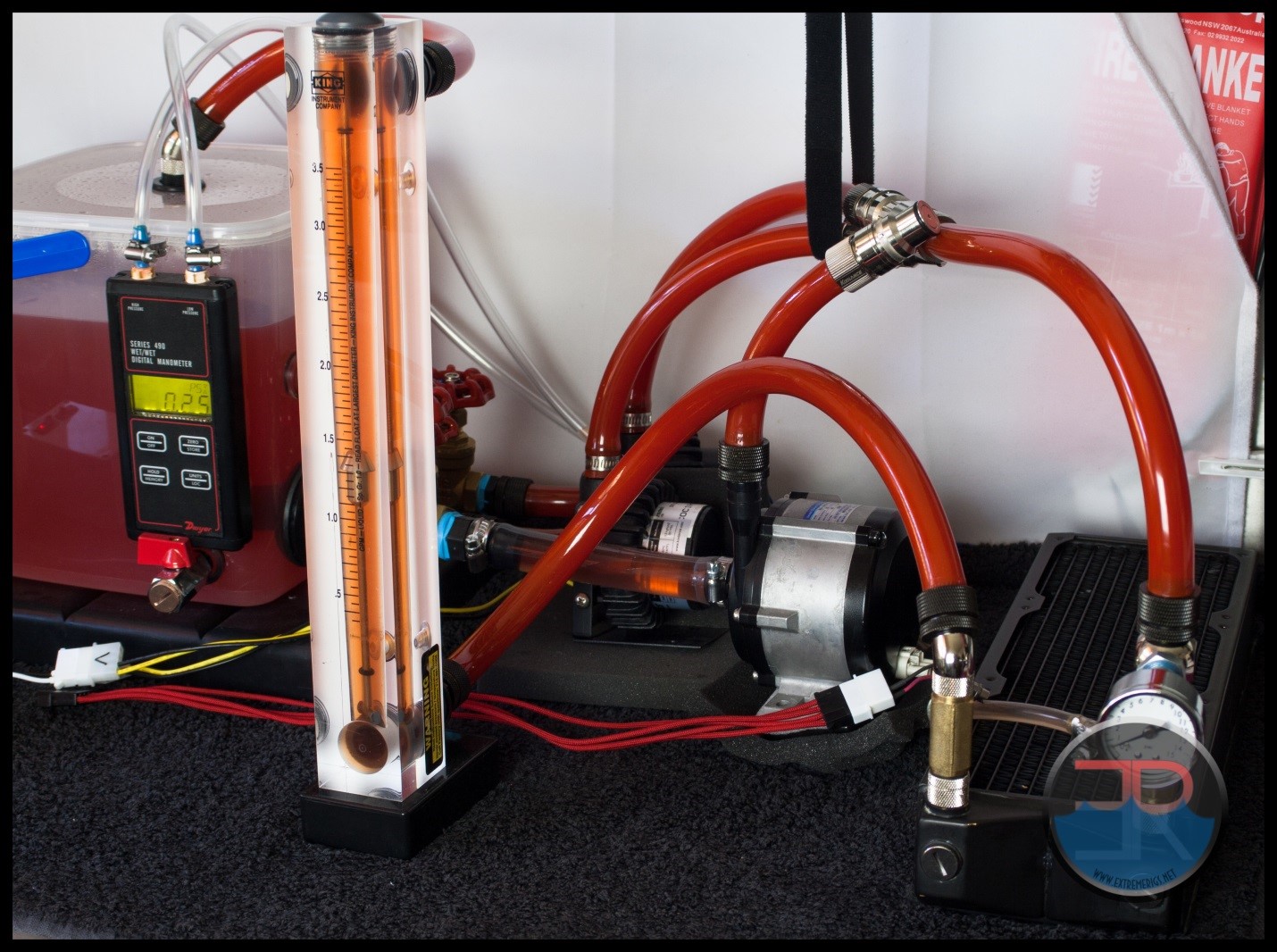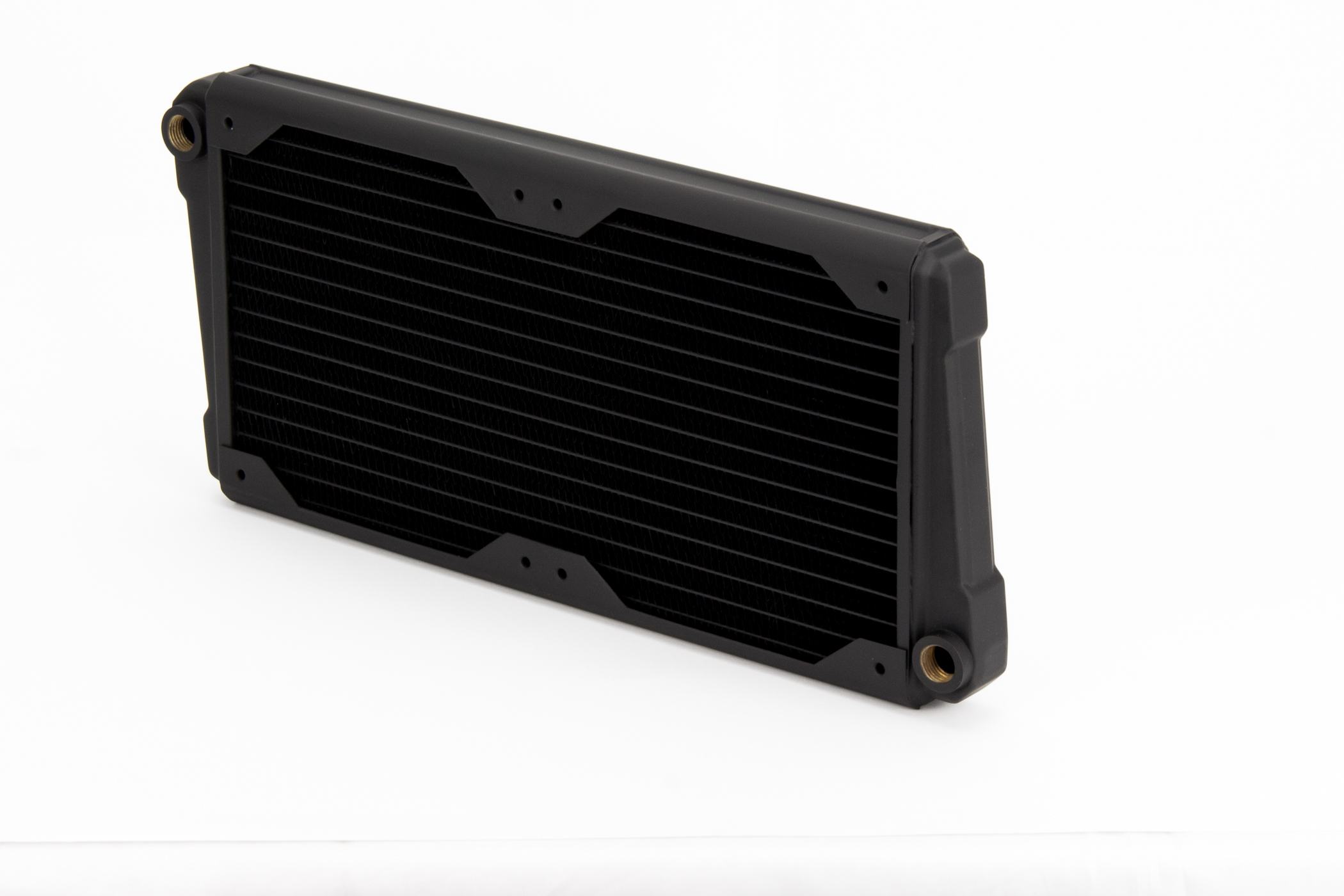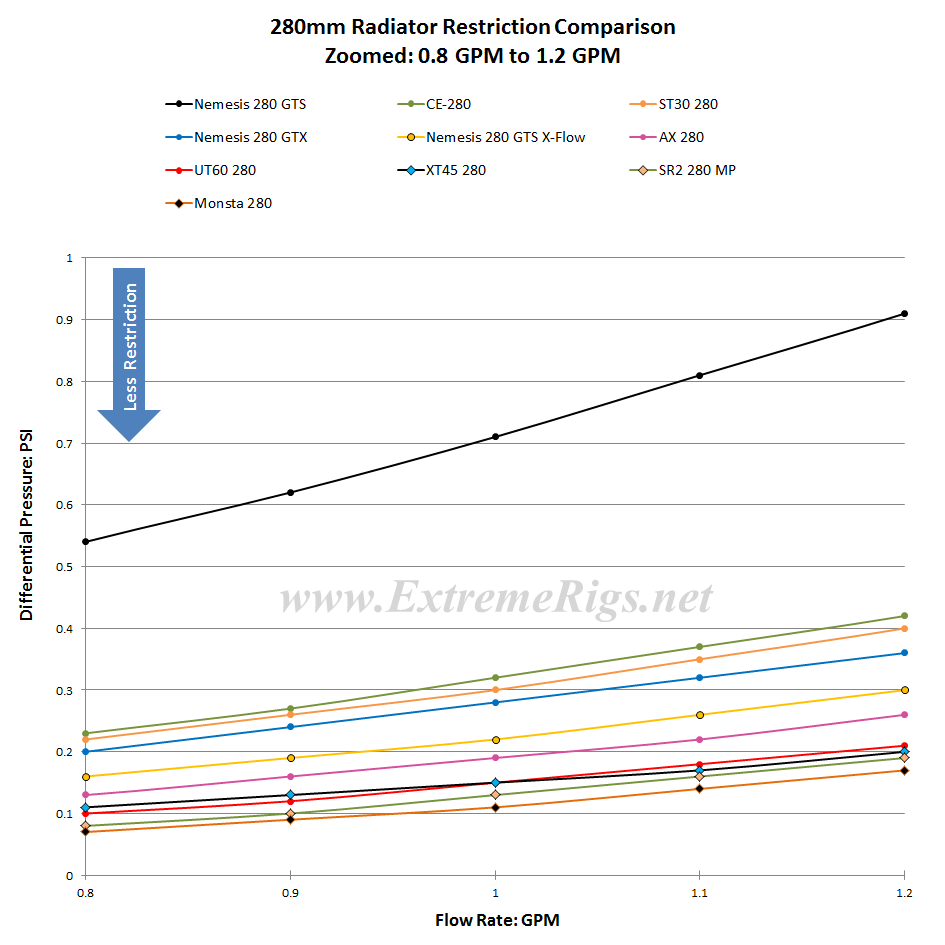The Data
As all the testing was performed with the exact same equipment (except the 140mm Noctua Industrial fans replace the 120mm GT fans), using the exact same methods as was used in the 360mm round-up we have decided to keep this review uncluttered by keeping our testing methodology, test set-ups and equipment used in a single location. To see exactly how the tests were carried out, details of the test set ups and equipment used, please head over to the RRU Test Setup page.
Restriction Test
It is generally agreed that radiators are one of, if not the least restrictive components in the water cooling loop. There are some exceptions however, so this must still be verified through testing:
 The above photo is for referencing the restriction test bench The Nemesis 280 GTS X-Flow is not loaded so please disregard the data in the picture as it does not relate to the its test results.
The above photo is for referencing the restriction test bench The Nemesis 280 GTS X-Flow is not loaded so please disregard the data in the picture as it does not relate to the its test results.
Here is the raw data at the tested flow rates, displaying the measured Differential Pressure across the radiator as flow rate was increased.
 The table numbers indicate that the Nemesis 280 GTS X-Flow is not a radiator with a high restriction level. However numbers in isolation can only tell half the story. By plotting against other components it more easily shows the whole story.
The table numbers indicate that the Nemesis 280 GTS X-Flow is not a radiator with a high restriction level. However numbers in isolation can only tell half the story. By plotting against other components it more easily shows the whole story.
We use a HeatKiller 3.0 CPU block as the reference in this next plot for two reasons. Firstly there is little chance of the plot being cluttered by curves overlapping and secondly it gives a reference point against a fairly common loop component of average restriction.
As with all previous radiator restriction plots, we have limited the maximum flow rate displayed to 2.0 GPM as we suspect there are very few systems that operate above 2.0 GPM. For more information on how to read a restriction plot check out our guide.
 This plot indicates the Nemesis 280 GTS X-Flow is a low restriction loop component when compared to a CPU block of average restriction, but what about other radiators?
This plot indicates the Nemesis 280 GTS X-Flow is a low restriction loop component when compared to a CPU block of average restriction, but what about other radiators?
The next three plots show the restriction level at three different flow rates compared to the other 280mm radiator that have been tested. We consider the chosen GPM rates to represent systems which have low, medium and high flow rates.
 Here the the difference in restriction between the X-Flow and NON X-Flow versions really stands out. The effect on a system’s flow rate could be significantly impacted by the regular 280 GTS, while the X-Flow looks to be of average restriction for a radiator.
Here the the difference in restriction between the X-Flow and NON X-Flow versions really stands out. The effect on a system’s flow rate could be significantly impacted by the regular 280 GTS, while the X-Flow looks to be of average restriction for a radiator.


The Nemesis 280 GTS X-Flow has a medium restriction level compared to other 280 radiators which were tested.
A zoomed in plot showing a flow rate zone where most systems are likely to be operating at.
Let’s now take a look at where the Nemesis 280 GTS X-Flow fits in relation to all the radiators we have tested. For this plot, only results for 1.0 GPM have been used for the comparison.
 When put into context with all the radiators at 1.0 gpm, the Nemesis 280 GTS X-Flow fits into our criteria as a medium restriction radiator. The regular 280 GTS on the other hand was very restrictive.
When put into context with all the radiators at 1.0 gpm, the Nemesis 280 GTS X-Flow fits into our criteria as a medium restriction radiator. The regular 280 GTS on the other hand was very restrictive.
The following plot which shows restriction levels at 1.0 gpm for many current model radiators from Hardware Labs including the Nemesis 280 GTS X-Flow. (0.22 PSI)
Next up Thermal Performance.
![]()













Its amazing how well this rad preforms considering how thin it is. I am very curious to see how it would stack up against a 280 30mm thick version of the Alphacool xflow (suppose to release around the June-August time-frame from what I was told by them)
I have a caselabs mercury s5 so i dont think the length would be a problem, my question is should i go with 2 of these or 2 45mm ek 280’s? cooling a cpu 5820k and a 1070 ftw.
HWLabs rads are sometimes a little wider than most and sometimes don’t fit in CaseLabs cases when you need to mount two next to them for example in the roof of a Mercury case. Measure up first and if in doubt maybe go with the EK ones 🙂
Comments are closed.